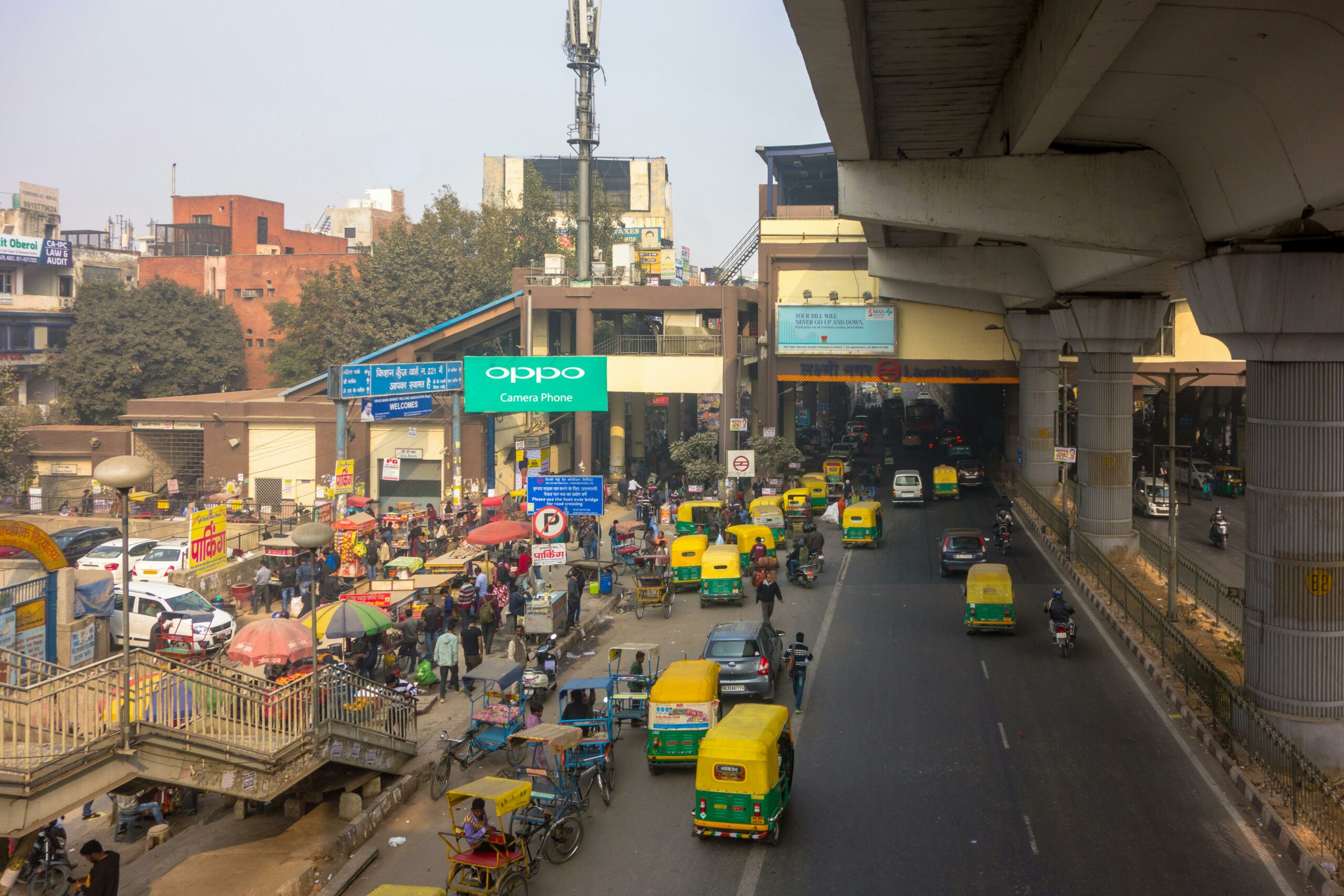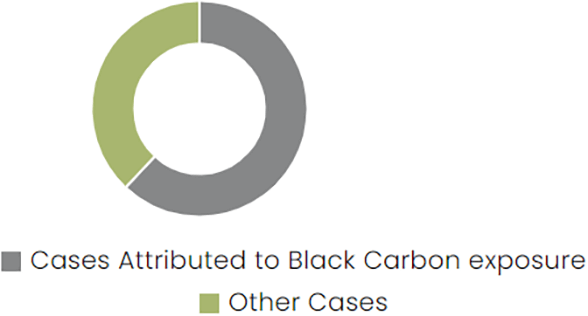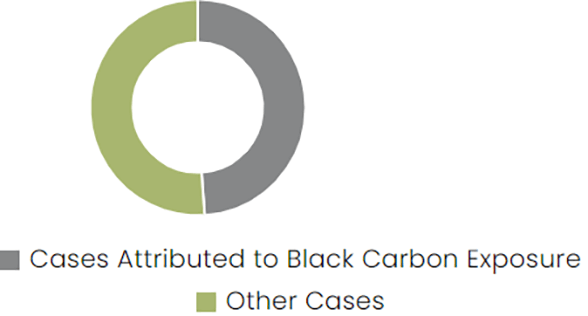Saving Lives While Keeping Climate Goals On Point By Tackling India’s Black Carbon Issues.

Nearly two-thirds of deaths caused by heart disease in megacities like Delhi and Kolkata are related to black carbon exposure, says a study published by Science Advances.
Black carbon, or soot, warms the atmosphere by absorbing sunlight. This is then deposited onto ice and snow, speeding up melting. Origins come from a combination of sources, including the incomplete burning of wood and coal during winters, cooking stoves, transportation, power stations, field burning of agricultural wastes, as well as forest and vegetation fires.
The Indo-Gangetic plain region, covering much of northern and eastern India and around half of Pakistan, is known to be a global hotspot of atmospheric pollutants with large concentrations of black carbon in the air, especially during winter.
Cardiovascular Disease Mortality in Megacities
Heart Disease Mortality in Semi-Urban Areas


The study found about 62 % of cardiovascular disease mortality burden can be attributed to black carbon exposure in megacities, while the material is responsible for almost half, or 49%, of heart disease in semi-urban areas.
“More than 400,000 lives can potentially be saved from CVM [cardiovascular disease mortality] annually by implementing prioritised emission reduction from the combustion of domestic biofuel in the semi-urban area, diesel oil in transportation, and coal in thermal power plant and brick kiln industries in megacities,”
— report by Science Advances

Black carbon is not a toxic compound of particulate matter (PM), but it is known to be co-emitted with toxic compounds. Reducing black carbon has dual benefits for public health and the Earth’s temperature.
“BC, therefore, serves as a valuable air quality indicator, reflecting the health risks of airborne particles to effectively protect public health from the combustion PM”
— Science Advances